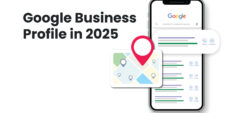Even though SEO has been present for a few decades, everyone was at least a bit amazed that it took that long to switch to mobile first indexing.
For those of you who are not 100% sure what SEO represents, SEO (search engine optimization) represents a group of methods for better visibility on search engine result pages (a dominant search engine is Google).
Or, helping the right people find the right stuff online.
And SEO can drive millions of visitors to your website if you make the right moves.
Ok, so let’s start from the beginning. Google has been basing its ranking system on the desktop for a long time because the majority of internet users were using it on their PC.

So when the mobile revolution happened, where everyone immediately had a pocket computer with the ability to surf the web, shop, and talk online, it started to transform the field dramatically.
60% of users were using their mobile phones to visit websites, and that signified that something had to change.
So, in November of 2016. Google announced its mobile-first indexing.
What does mobile first indexing means exactly?
What did it mean in simple terms? It meant a shift from indexing the desktop version of a website to a mobile version.
Analysis of people’s use of their mobile devices has changed. It used to be that they would check their phone for the most part during their commute.
Now, 75% of all device usage happens at home or at work, which is also a dramatic shift. An even more important thing, according to Google itself, is that over 75% of internet traffic happens on mobile devices.
All of the above stipulates that focusing on mobile first indexing is a very important factor in getting higher traffic to your website.
What does mobile first indexing looks for?
Responsive web design
Responsive web design is basically a design that changes content depending on the size of the screen it is being viewed on. And it’s really important to have a responsive website.
A mobile version of the website should have a good user interface and user experience design, to enhance the navigation and to look nice.
It goes without saying that if you do not have a responsive web design on your website; your ranking may suffer significantly. There are a few caveats to this, though, so it’s worth noting it doesn’t always have to be the case.
But the general rule of thumb is – responsive design is your number one priority if you want to place yourself well on Google. Apart from, you know, all the basic stuff, like having a good website design, great content, excellent optimization, and user experience design.
If your website is responsive and you are happy with your current ranking – you have nothing to fear, right now, or in the coming future. But, there are still ways to improve your ranking, if you still haven’t done it.
Mobile page speed and loading time prioritization is a good way to start, as it will positively impact your ranking. Another good way to improve it is to optimize your image and other dynamic elements for the mobile experience.

Optimizing content for mobile-first indexing
Optimizing content for mobile-friendly websites can be harder than it sounds. There are many sites that do have responsive web design, but the content is not optimized for it. Or even worse, they think it is, but it actually isn’t.
The quality of experience should be on the same level as a desktop one.
The first major issue could be your articles.
Even though having a 2000 word article for your blog can be both a testament to your dedication and your creativity, posting long-form content within them will be a clear detriment to your visitors from reading them.
Using shorter paragraphs could help your visitors read your content more easily.
Another thing that helps with content optimization for mobile devices is using several types of content. Audio and video content is a great thing to have on your website and combining them well would yield incredible results.
Also, under no circumstances should you use Flash for any of your content. iPhone cannot support it, so going with HTML5 is the best way to place your content.
And last, but not least, make sure that your content is crawlable and indexable, alt-tags for images included.
Related: The reasons why you should choose a web application.
What to do if you have a separate, mobile version of the website?
You have to keep in mind that the mobile first indexing is still in its early phase of testing, so it will be very gradually introduced. Google so far has been introducing it to a handful of select websites, the ones Google deems such changes will affect them minimally.
If you have a separate, mobile version of the website, it’d be wise to check for:
Content: We’ve talked in detail about it above, the same principles we mentioned apply here as well.
Metadata: Ensuring that titles and meta descriptions are corresponding to one another. What that means is that they don’t have to be the same as the letter, but do have to have the same meaning.
A shorter character count is desirable in optimizing the mobile experience, but it’s imperative to make sure that all the relevant keywords and information stay the same in the process.
Structured data: the same structured data markup should be used in both versions of the website.
Search console adds: You have to add and verify your mobile version in the Google search console, in addition to your desktop version.
Hreflang structuring: If you are using hreflang, you should create your mobile URL annotations for hreflang to lead to the mobile versions of your language. The same applies to the desktop.
XML and media sitemaps: All the links to sitemaps must be accessible from the mobile version of the site. This is also true for robots.txt, on-page meta-robots tags, and eventual links to a privacy policy page.
Social metadata: All of the eventual Twitter tags, Facebook OpenGraph tags, and other social metadata should be included in both the mobile and the desktop versions.
Switchboard tags: If you have mobile switchboard tags already (and all the chances are that you do), you don’t need to change anything, leave it like it is.
Server capacity: If you have a mobile version of your website on a different host, you need to check whether your server can handle an increased crawling rate.
App indexing: If you’ve set up app indexing for your site, do the verification of the mobile site version in relation to app association files.
Right now you may be left with a question:
What do I do if I do not have a mobile-friendly website?
Well, two (very obvious) obvious things. The first one is to stay that way.
In general, you won’t feel any different than before, but it’s worth bearing in mind that you’d continue to lose a great piece of your online potential by not being optimized appropriately for mobile device users.
The rule of the thumb is that it’s kind of better to NOT have a mobile website instead of a broken one or the one that’s not user-friendly.
Buuuuuut, mobile device usage is rising steadily over the years, and not investing in mobile-friendly website and content is going to have greater and greater consequences for your online presence.
The second obvious thing is to develop a mobile-friendly website, of course. Developing one could help you immensely in your online endeavors, as Google already has a bias against websites that aren’t mobile-friendly.
I hope this article has been helpful in explaining what does mobile-first indexing means and the advantages of having it present on your website.
Lucky for you we are here to deal with all those weird stuff. Stop banging your head against the wall and get your free estimate.





